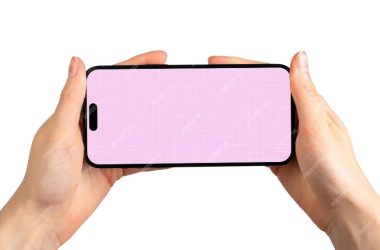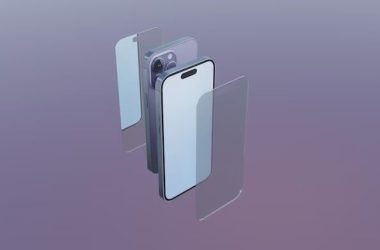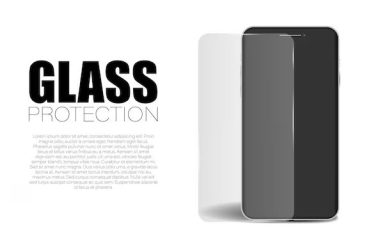Pixel density refers to the number of pixels within a given area of a display screen (Pixel Density. Literally, the density of pixels. See: Pixel Pixel density is commonly measured in ppi. See: PPI. Still confused? Spot a mistake?, https://www.phonescoop.com/glossary/term.php?gid=553). It is typically measured in pixels per inch (ppi) and indicates how tightly pixels are packed on a display. The higher the pixel density, the sharper and clearer the image on a screen appears.
Pixel density is an important specification for displays because it directly impacts picture quality and sharpness. A display with a higher pixel density will generally be able to produce finer details and crisper text than a display with a lower pixel density (Pixel Density Calculator, https://calculator.academy/pixel-density-calculator/).
Pixel density correlates to a display’s resolution. Resolution refers to the total number of pixels on a display, which increases as the display gets larger. Pixel density accounts for both resolution and screen size by measuring how densely those pixels are arranged. A high resolution display can still have a low pixel density if the screen size is very large.
Measuring Pixel Density
Pixel density for phone screens and other digital displays is typically measured in pixels per inch (PPI). PPI refers to the number of pixels contained in a linear inch of the display. A higher pixels per inch measurement means the display is able to render more detail.
For example, a 1080p phone screen that is 5 inches diagonal will have a PPI of around 440. This means there are 440 pixels crammed into every linear inch of the display. Meanwhile, a 4K screen of the same size would have around 880 PPI. The 4K screen can display finer details and textures.
Another related measurement is dots per inch (DPI). DPI refers to the number of individual dots of ink or pixels that can fit within a linear inch. So PPI and DPI refer to the same concept of pixel density, just different contexts – PPI is for displays and DPI is for printing. The terms are sometimes used interchangeably.
The key relationship to understand is that a higher resolution will allow for greater pixel density. Resolution refers to the total number of pixels on the display, expressed as horizontal x vertical pixels. More pixels spread across the same screen size means you can pack them more densely. A 1080p screen has around 2 million total pixels, while 4K quadruples that to over 8 million pixels total for hugely increased detail and sharpness.
So in summary, PPI describes pixel density, which is ultimately determined by the screen’s resolution. Higher resolution enables higher pixel density and thus sharper image quality.
Sources:
https://www.autonomous.ai/ourblog/what-is-monitor-pixel-density
$200 VIOTEK GNV29CB Review (120HZ, 1200R, 21:9)
byu/ProxyOOF inultrawidemasterrace
Ideal Pixel Density for Phones
How high does a phone’s pixel density need to be for a sharp, crisp display? Most phones fall in the 400-500 pixels per inch (PPI) range. Research suggests the minimum PPI for a sharp screen under typical usage conditions is around 300-350 PPI based on the average viewing distance for a smartphone user (source). Beyond 400-500 PPI, increases in pixel density yield diminishing returns for perceived visual improvement.
However, larger screen sizes require lower pixel density to maintain the same level of sharpness. A phone with a 6-inch screen can have a lower PPI than a 5-inch screen and still appear equally crisp when held at a typical viewing distance. So there is no single ideal PPI across all smartphone screen sizes. The optimal balance depends on balancing pixel density, screen size, resolution, battery efficiency, and other factors (source).
High Pixel Density Displays
Phone screens with very high pixel densities, typically over 500 PPI, are considered high pixel density displays. Some examples of phones with very high pixel density screens include:
- Sony Xperia XZ Premium – 801 PPI
- Sony Xperia Z5 Premium – 806 PPI
- Samsung Galaxy S7 – 577 PPI
- LG G3 – 538 PPI
The main benefits of such high pixel density displays are:
- Extremely sharp image quality with no distinguishable pixels
- Smooth curves and diagonal lines instead of jagged edges (reduced aliasing)
- More detailed and sharper text
Some potential drawbacks include:
- Higher power consumption and reduced battery life
- Higher manufacturing costs
- Diminishing visual returns beyond a certain point
Very high pixel density screens are best suited for use cases that benefit from the sharpest image quality possible, such as:
- VR and AR applications where the screen is close to the eyes
- Graphics and video editing where fine details are important
- High quality photo viewing
Most everyday users may not notice much difference beyond 400-500 PPI in normal use cases like web browsing, messaging, social media, etc. So there are diminishing returns on investment at the very high end of the PPI spectrum.
Improving Perceived Pixel Density
There are a few techniques that can help improve the perceived pixel density of a phone screen, even if the actual pixel density remains the same:
PenTile matrix arrangements: Some displays use a PenTile matrix with alternating red, green, and blue subpixels. This allows manufacturers to achieve higher pixel densities compared to a traditional RGB stripe layout. The staggered subpixels can make edges and text appear slightly softer, so manufacturers may opt for a higher physical pixel density to compensate.
Anti-aliasing and supersampling: Anti-aliasing smooths out jagged edges by blending pixel colors together. Supersampling renders content at a higher resolution before downscaling it to the native display resolution. Both techniques can reduce the visibility of individual pixels, leading to a smoother overall image.
Higher brightness and contrast ratio: A brighter display with good contrast allows individual pixels to appear sharper and more defined. Dimmer displays can make everything look slightly blurred. A high-quality screen improves perceived sharpness and makes pixel structure less obvious.
Pixel Density vs. Camera Resolution
Pixel density and camera resolution are related but distinct concepts when it comes to viewing photos on a phone screen. Pixel density refers to the number of pixels packed into each inch of the display. Camera resolution refers to the number of megapixels the camera sensor can capture.
For viewing photos, a high pixel density display can show more detail and make images appear sharper, especially when zoomed in. However, the camera resolution limits how much detail is available in the photo. So if the camera resolution is low, a high density display will not create detail that is not there.
Higher pixel density matters most for photography when zooming into photos, cropping images, or printing large photos. The higher density display can show finer details that would not be visible at lower densities. For casual viewing of social media sized images, even low density displays may be adequate.
In summary, both camera resolution and pixel density affect how much detail is visible when viewing photos on a phone. But the camera limits the available detail, while the display determines how much of that detail is viewable to our eyes (Source: https://www.dpreview.com/forums/thread/4630407).
Factors Other Than Pixel Density
While pixel density is important for determining sharpness and clarity, there are other factors that also impact the overall quality and viewing experience of a smartphone screen.
One major factor is the screen technology itself. Most smartphones today use either LCD (liquid crystal display) or AMOLED (active-matrix organic light-emitting diode) display panels. AMOLED screens can produce deeper blacks and higher contrast compared to LCD, resulting in more vibrant colors and dynamic range. However, some users may prefer the more accurate colors reproduced on some high-end LCD displays [1].
Color accuracy, brightness, and contrast ratio are other important metrics that affect visual quality. A screen with poor color accuracy will show hues that are oversaturated and unrealistic. Low brightness makes it harder to view content clearly, especially outdoors. Contrast ratio determines how distinguished blacks are from whites; the higher the ratio, the more depth and detail is visible in dark regions of an image. Though high pixel density provides sharpness, these other attributes impact the viewing experience and how true-to-life colors and details appear.
Balancing Pixel Density and Battery Life
Higher pixel density displays require more power to energize the greater number of pixels. With more pixels packed into the same screen size, each individual pixel can be smaller and draw less power. However, the cumulative effect of powering millions of extra subpixels still increases overall display energy usage.
For example, a 1440p display has around 77% more pixels than a 1080p screen of the same size. Some tests show 1440p draining battery 11-12% faster compared to 1080p when displaying the same content [1].
Manufacturers use optimizations like variable refresh rate to help compensate. By syncing the display refresh rate to the rendering rate, the screen can conserve power by avoiding unnecessary refreshes. Intelligent power management and larger batteries also offset the greater power draw.
Overall, higher resolution tends to decrease battery life, but ongoing enhancements in power efficiency can minimize the impact. Users choosing a new phone may want to balance preferences for sharpness versus battery endurance.
The Future of Phone Screen Pixel Density
Current technology limitations make it difficult to significantly increase pixel density in phone screens beyond today’s levels. Displays with extremely high pixel densities require very advanced manufacturing techniques that are not yet cost-effective for mass production. There are also challenges around power consumption, heat dissipation, and graphics processing requirements at very high resolutions.
However, new display innovations on the horizon could enable continued improvements in pixel density while managing the downsides. MicroLED technology shows promise for creating smaller individual pixels to increase pixel density without substantially increasing power needs. New backplane technologies like oxide TFT allow higher refresh rates that can help make extra pixels more usable. Quantum dot and organic LED innovations could also potentially improve pixel density if adopted for phone displays.
While the smartphone “pixel density war” has slowed down, advancements in display technology will likely allow modest ongoing increases in resolution and pixel density. But companies are shifting focus beyond just chasing ever-higher specs and toward improving real-world visual quality through better calibration, refresh rates, HDR, and brightness at current densities.
Conclusion
In summary, pixel density is a measurement of how densely packed the pixels are in a phone’s display. The most common pixel densities in smartphones today range from around 300-500 pixels per inch. Higher pixel densities generally provide sharper image quality and text, especially for VR and AR applications, but don’t improve visuals beyond a certain point while consuming more power.
For most users, a pixel density between 400-500 ppi provides a good balance of image sharpness without excessive battery drain. Power users who want the crispest visuals for mobile VR/AR may benefit from 550+ ppi displays. Gamers and media streamers should aim for at least 400 ppi. Basic users who just want sharp text and casual photos/videos will be fine with ~300-400 ppi.
Beyond pixel density, factors like display size, brightness, color accuracy, refresh rate, and software optimization also impact the viewing experience. Continued improvements in battery efficiency will enable higher resolution displays in the future. But for now, evaluating your specific usage and priorities can help determine the ideal pixel density for your next phone.




